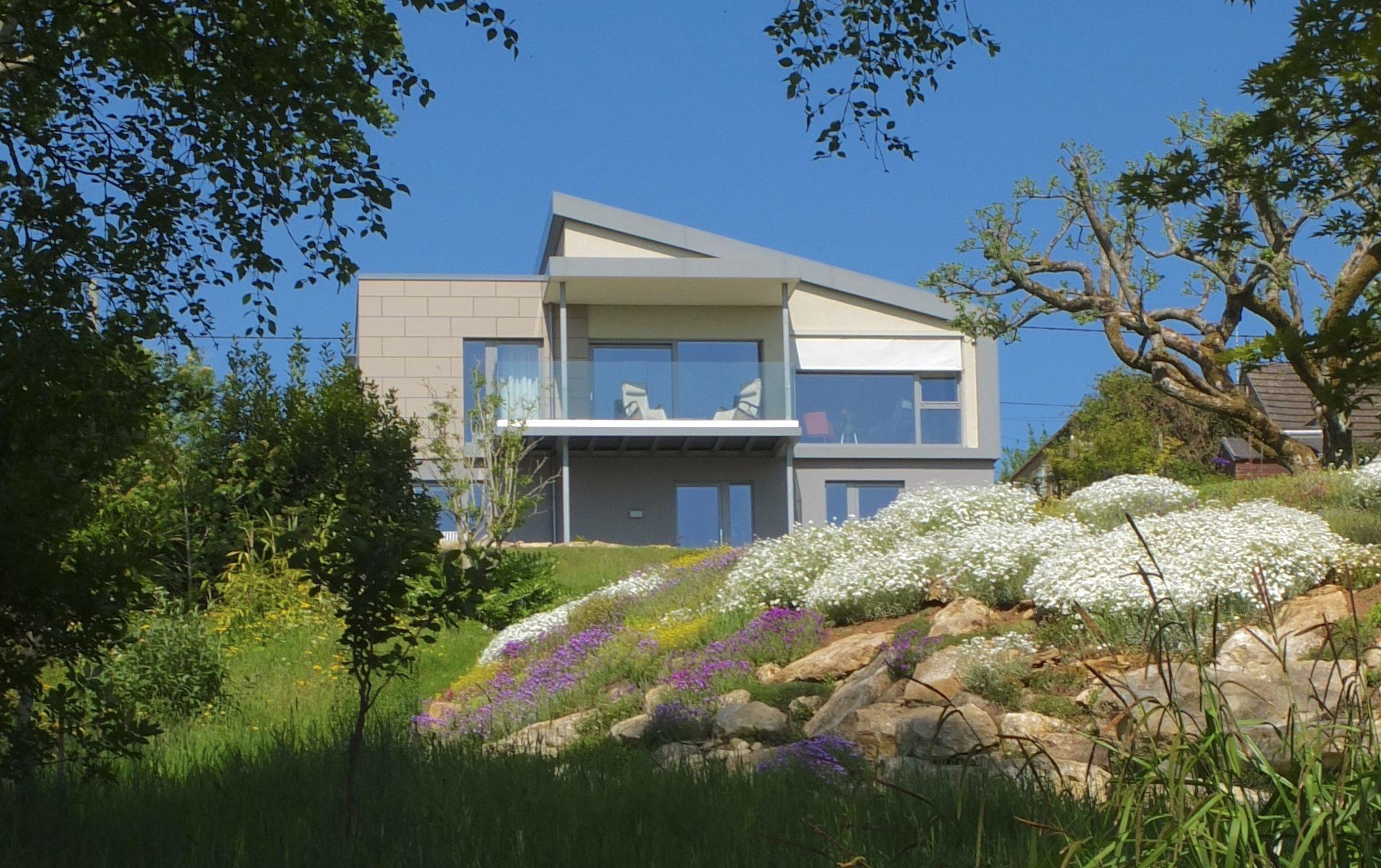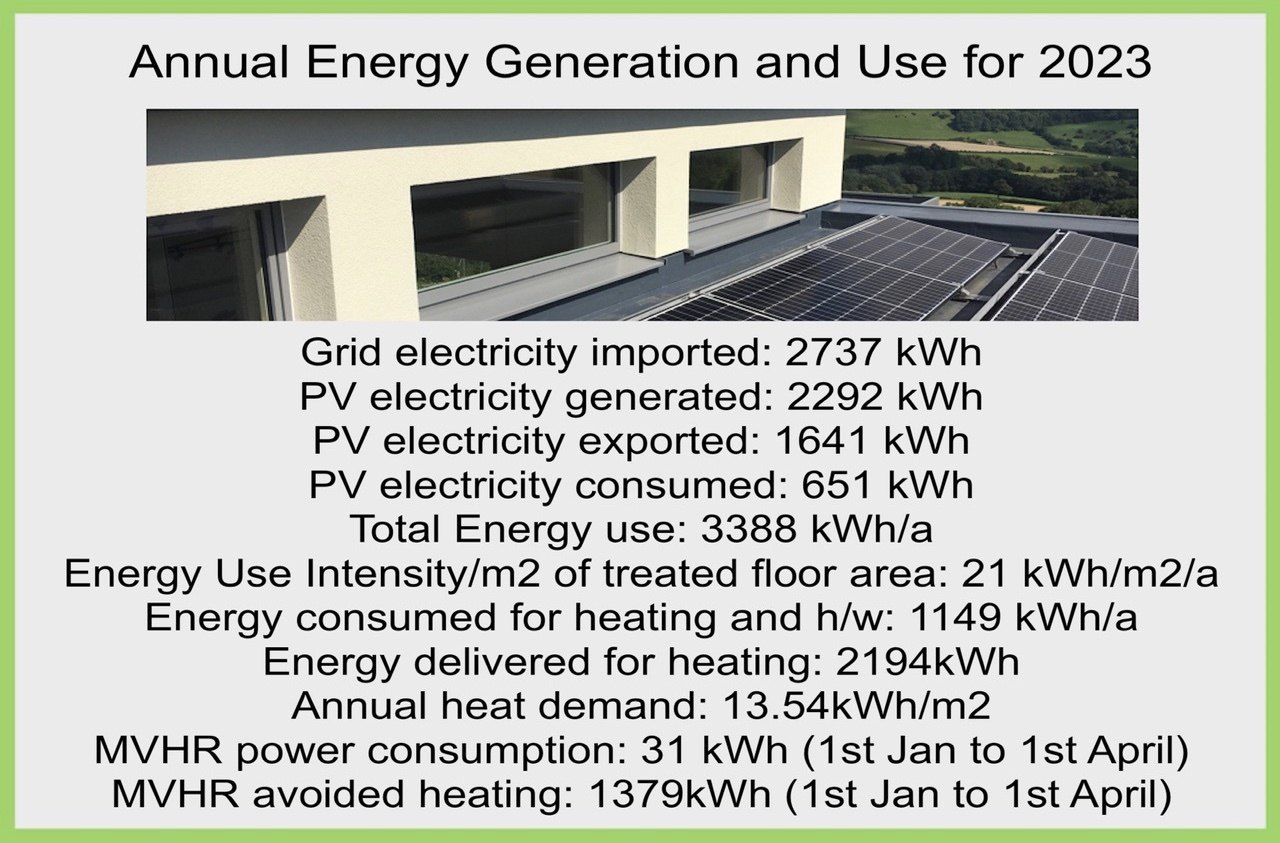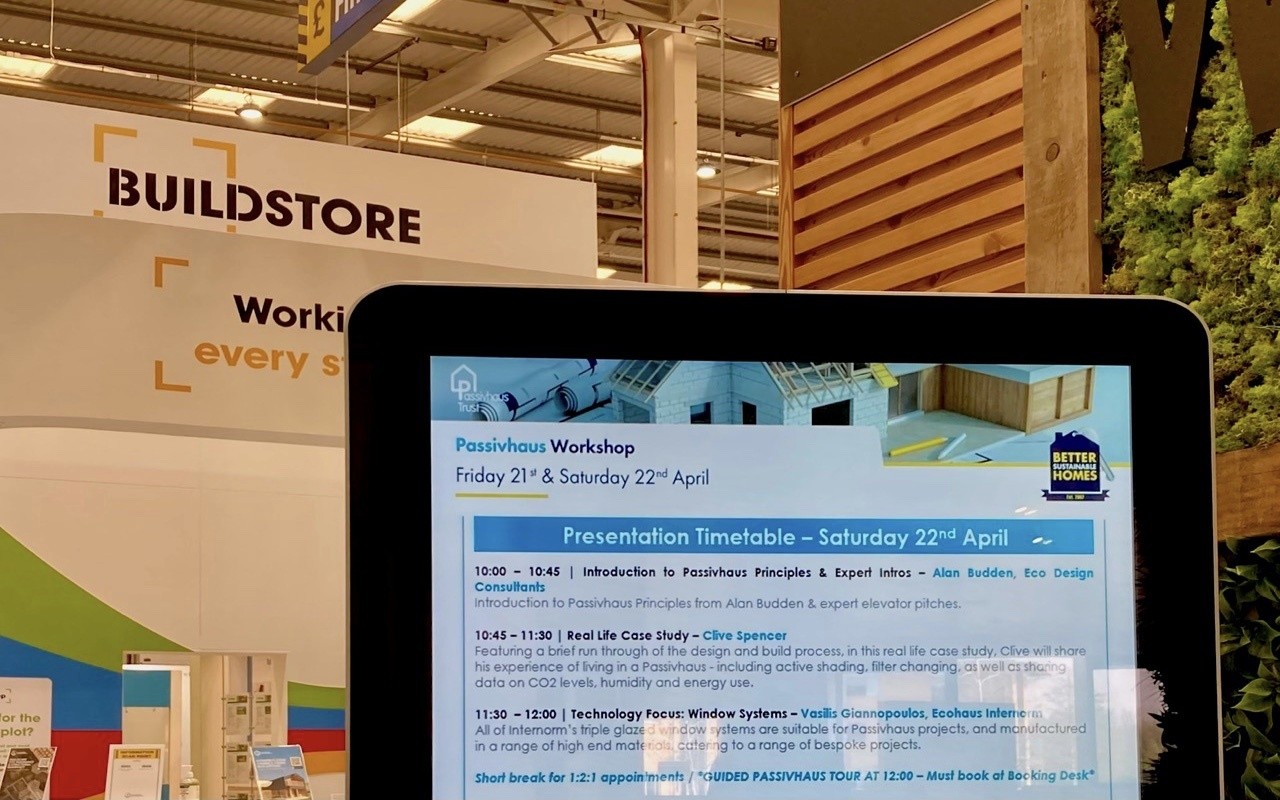Eastrip Lane: A client’s perspective
Completing a build project might be the end of one journey, but for our clients it’s the beginning of another, even more important one.

After a year of occupation in our new home, we had become very aware that our lived experience in Eastrip Lane had dramatically changed for the better, in terms of comfort, wellbeing and running costs. Partly as a result of the latter, we started monitoring our energy use and furthering our understanding of ultra-low energy buildings and how they perform. We now have data for both heating, hot water, energy generation, internal humidity and more recently CO2 levels.
During the planning stage, after much deliberation and trusting in Greenheart’s track record, we had decided not to certify. So as the first year drew to an end, the sense of anticipation grew as we were about to find out if we had a Passivhaus. Although the data wasn’t reliable for milder weather conditions (or our nearly 600 feet of altitude, which would probably balance out the equation), we comfortably passed the test. The following years have provided amazingly consistent results.


Once we were in possession of such useful experience and data, we really wanted to share it, so we volunteered to be a case study on the National Self Build and Renovation Centre’s (NSBRC) website and following on from that, be a real-life case study in their online Passivhaus Workshop. This worked well, so I then took part in two more live workshops in the presentation theatres at the NSBRC in Swindon. This led on to doing two further presentations to community groups, who were interested in Passivhaus for affordable housing schemes.
Last year, having collated this comprehensive record of performance date, we contacted the Passivhaus Trust about taking part in the biannual International Passivhaus open days. As part of this involvement, we underwent the process of self-declaring ourselves as a Passivhaus, by submitting our consultants Passivhaus Planning Package calculations, along with a years’ worth of performance data, to the Passivhaus Institute in Germany. Our application was accepted and processed and as a result we now have a registration number and an entry on the Institute’s data base.
Although we have achieved registration, if we built again, we would certify. In our case, the protection certification provides against performance shortfall fortunately proved not to be necessary, but it would have added value to the project, because of the growing recognition of the standard.
Our most recent projects are opening our home as part of the National Green Open Homes event and using our accumulated first-hand experience to try and advance the planning policies that govern the standard of new construction in Wiltshire, and hopefully beyond, by promoting Passivhaus at the full council meeting in County Hall.
We do consider ourselves extremely privileged to live in such a comfortable and healthy environment and really do want to try and share the message that the most important goal in your building process should be to achieve the Passivhaus standard, whether certified or not. If you feel you have the time and interest, reading the Low Energy Transformation Initiative’s document on achieving Net Zero and Scotland’s example of implementing the standard, you’ll soon understand how much sense it makes.
My favourite takeaway from the talks I’ve been involved in was from an Eco Design Consultant. He remarked that when you’re told that your design will be compromised by trying to achieve Passivhaus, you should consider the fact that Ferrari could have backed off when they realised the importance of aerodynamics, but they stepped up to the plate and made it an art form. And whilst we wouldn’t want to stick a Ferrari label on our house, we are very happy to have a Greenheart one.
